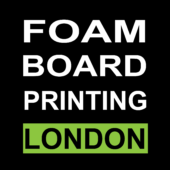Gluing foam board to wood is a common practice in various DIY projects, crafts, and professional applications. Whether you’re creating signage, building models, or working on home decor, achieving a strong bond between foam board and wood is essential for durability and stability. Here’s a step-by-step guide on how to effectively glue foam board to wood.
Materials You’ll Need
- Foam Board: Available in various thicknesses, choose one that suits your project.
- Wood Surface: This could be plywood, MDF, or any other wood type.
- Adhesive: The choice of adhesive is crucial. Some popular options include:
- PVA Glue: This is a white glue commonly used in crafts.
- Spray Adhesive: Ideal for large surface areas, providing even coverage.
- Hot Glue: Quick-drying and effective for immediate bonding.
- Contact Cement: Best for projects requiring a strong, permanent bond.
- Clamps (optional): To hold the foam board in place while the adhesive dries.
- Utility Knife or Scissors: For cutting the foam board.
- Ruler or Straightedge: To measure and cut accurately.
- Sponge or Cloth: For cleanup of excess glue.
Steps to Glue Foam Board to Wood
- Prepare the Surfaces:
Start by ensuring both the foam board and the wood surface are clean and dry. Wipe away any dust, grease, or dirt using a damp cloth. This preparation helps the adhesive bond better. - Measure and Cut:
Measure the area where the foam board will be attached to the wood. Use a ruler and a utility knife or scissors to cut the foam board to the desired size. If you need to create specific shapes, use a straightedge for cleaner cuts. - Choose Your Adhesive:
Decide on the type of adhesive you want to use based on your project needs. For example, if you need a quick fix, hot glue might be the best option. For a more permanent bond, consider contact cement or PVA glue. - Apply the Adhesive:
- For PVA Glue: Apply an even layer on the wooden surface using a brush or directly from the bottle. Avoid applying too much glue, as it can seep out and create a mess.
- For Spray Adhesive: Follow the manufacturer’s instructions, holding the can about 6–12 inches from the surface. Spray a thin, even coat on both the foam board and the wood.
- For Hot Glue: Apply a line of hot glue along the edges of the foam board. Work quickly, as hot glue sets fast.
- For Contact Cement: Apply a layer to both surfaces. Allow it to dry for a few minutes until it’s tacky, then carefully press the foam board onto the wood.
- Position the Foam Board:
Carefully align the foam board with the wood surface. Take your time to ensure that it is straight and positioned correctly, as adjustments can be difficult once the adhesive bonds. - Clamp the Bond (if necessary):
If using PVA glue or contact cement, consider using clamps to hold the foam board in place as it dries. This can prevent shifting and help ensure a strong bond. - Let It Cure:
Follow the adhesive’s instructions for curing time. Typically, PVA glue may require several hours, while hot glue sets quickly. Contact cement often bonds immediately but should be left to cure for at least an hour. - Clean Up:
Once the adhesive has cured, check for any excess glue. Use a damp sponge or cloth to clean up any spills or smudges.
Conclusion
Gluing foam board to wood is a straightforward process that can greatly enhance the functionality and aesthetics of your projects. By following these steps and selecting the appropriate adhesive, you can achieve a strong, lasting bond that will hold up over time. Whether you’re crafting, designing, or building, mastering this technique will help you create professional-looking results. Happy crafting!
